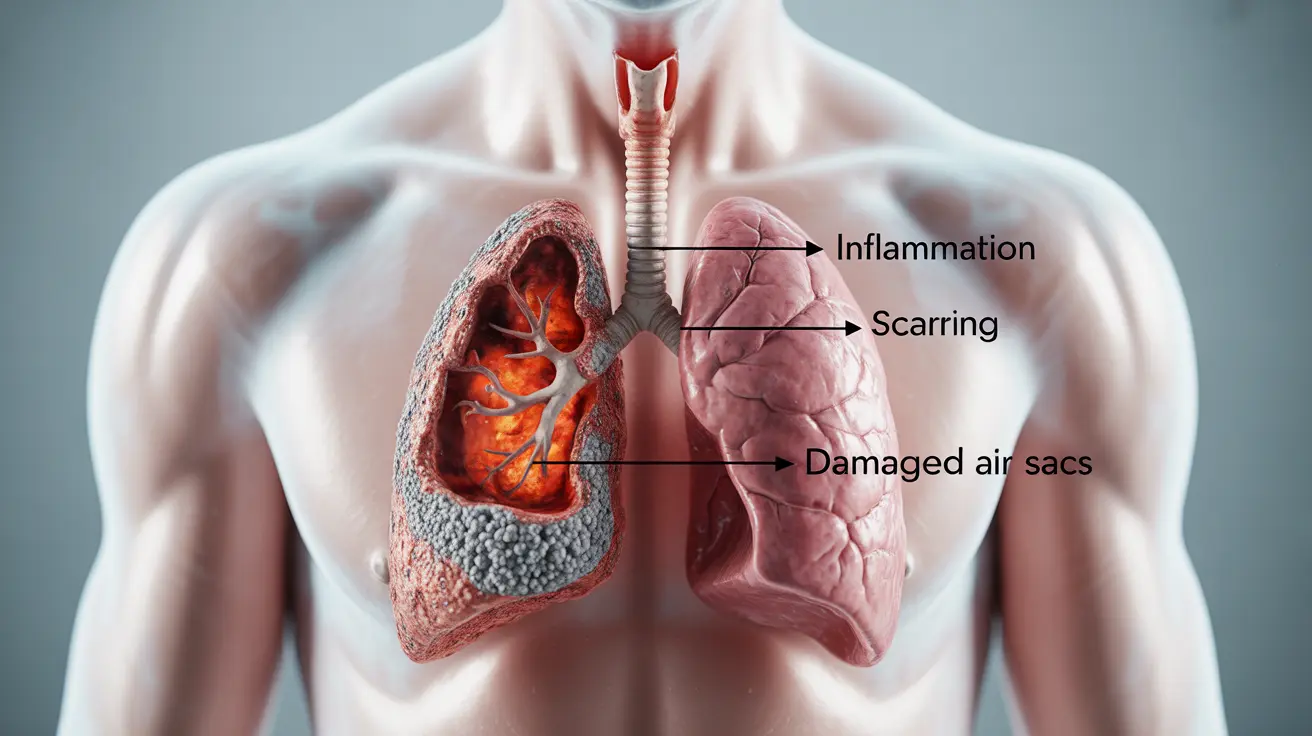Smoking's effect on lung health is profound and far-reaching, causing significant changes to the respiratory system over time. Understanding how smoking impacts lung function and recognizing the signs of smoker lungs is crucial for both prevention and treatment of smoking-related lung diseases.
This comprehensive guide explores the characteristics of smoker lungs, their symptoms, and potential treatment options, while also discussing the possibility of recovery after quitting smoking.
How Smoking Affects Lung Structure and Function
When tobacco smoke enters the lungs, it immediately begins to damage the delicate tissue structures. The tar in cigarette smoke coats the lungs' inner surfaces, while toxic chemicals trigger inflammation and cellular changes. This continuous exposure leads to both immediate and long-term damage to the respiratory system.
The Immediate Effects of Smoking on Lungs
- Irritation of the airways
- Increased mucus production
- Constriction of bronchial tubes
- Reduced oxygen absorption
- Temporary inflammation of lung tissue
Long-term Structural Changes
- Thickening of airway walls
- Destruction of air sacs (alveoli)
- Scarring of lung tissue
- Loss of lung elasticity
- Permanent enlargement of air spaces
Common Diseases Associated with Smoker Lungs
Chronic Bronchitis
Chronic bronchitis develops when the airways become permanently inflamed, leading to persistent cough and excessive mucus production. This condition is characterized by daily cough and sputum production for at least three months of two consecutive years.
Emphysema
This condition occurs when the air sacs in the lungs are gradually destroyed, making it increasingly difficult to breathe. The damage is irreversible and results in decreased oxygen absorption and increased breathing effort.
Lung Cancer
Smoking is the leading cause of lung cancer, with chemicals in tobacco smoke directly damaging DNA in lung cells. This damage can lead to uncontrolled cell growth and tumor formation.
The Lung's Natural Cleaning System and Infection Risk
Smoking severely impairs the lungs' natural defense mechanisms. The tiny hair-like structures called cilia, which normally help clear debris and bacteria from the airways, become paralyzed and eventually damaged by tobacco smoke. This breakdown in the cleaning system makes smokers more susceptible to infections and respiratory illnesses.
Treatment Options and Recovery
While some damage from smoking is permanent, certain treatments can help manage symptoms and improve quality of life:
- Bronchodilators to open airways
- Anti-inflammatory medications
- Pulmonary rehabilitation programs
- Oxygen therapy when necessary
- Regular exercise and breathing exercises
The Benefits of Quitting Smoking
Quitting smoking can lead to significant improvements in lung health:
- Within 72 hours: Breathing becomes easier
- Within 1 month: Coughing and shortness of breath decrease
- Within 1-9 months: Cilia regain function
- After 10 years: Lung cancer risk drops significantly
Frequently Asked Questions
What are the common symptoms of smoker lungs and how do they affect breathing?
Common symptoms include persistent cough, increased mucus production, shortness of breath (especially during physical activity), wheezing, and chest tightness. These symptoms affect breathing by reducing lung capacity and making it harder to get enough oxygen during normal activities.
How does smoking cause chronic bronchitis, emphysema, and lung cancer?
Smoking causes these conditions through continuous exposure to toxic chemicals that inflame airways (chronic bronchitis), destroy air sacs (emphysema), and damage cellular DNA (lung cancer). The combination of inflammation, tissue destruction, and genetic damage leads to these serious respiratory diseases.
Can quitting smoking improve lung function and reverse damage to smoker lungs?
While some damage is permanent, quitting smoking can significantly improve lung function. The body begins repairing itself within hours of the last cigarette, with substantial improvements in breathing and lung function occurring over the following months and years.
What treatments are available to manage lung diseases caused by smoking?
Available treatments include medications (bronchodilators and anti-inflammatories), pulmonary rehabilitation, oxygen therapy, and lifestyle modifications. The specific treatment plan depends on the type and severity of lung damage.
How does smoking damage the lungs' natural cleaning system and increase infection risk?
Smoking paralyzes and eventually destroys cilia, the tiny hair-like structures that help clear airways of debris and bacteria. This impairment of the lung's natural cleaning system leads to mucus buildup and increased risk of respiratory infections.




